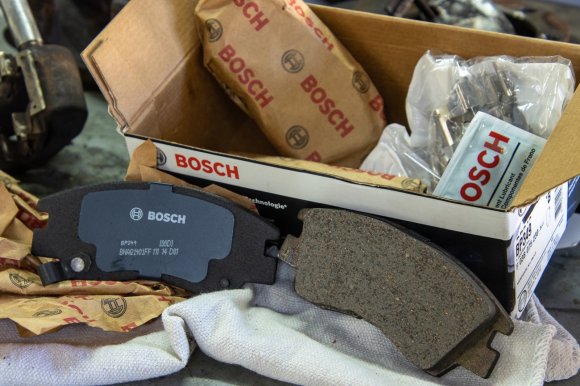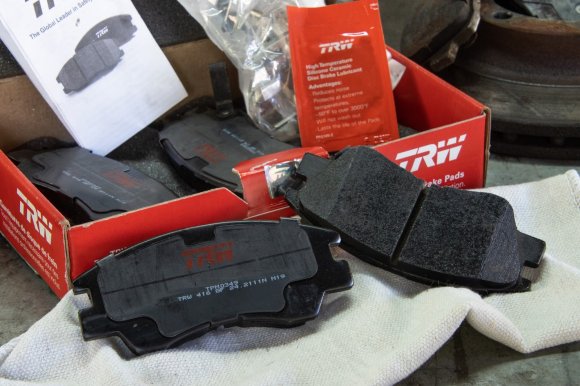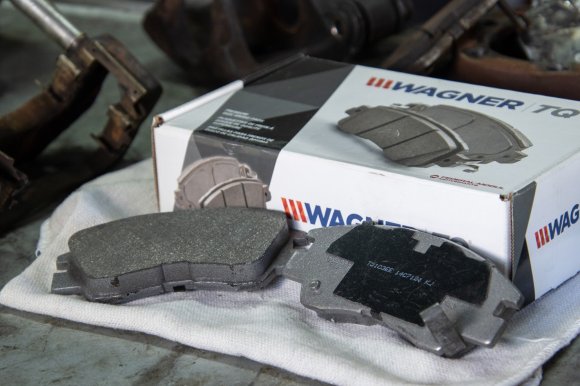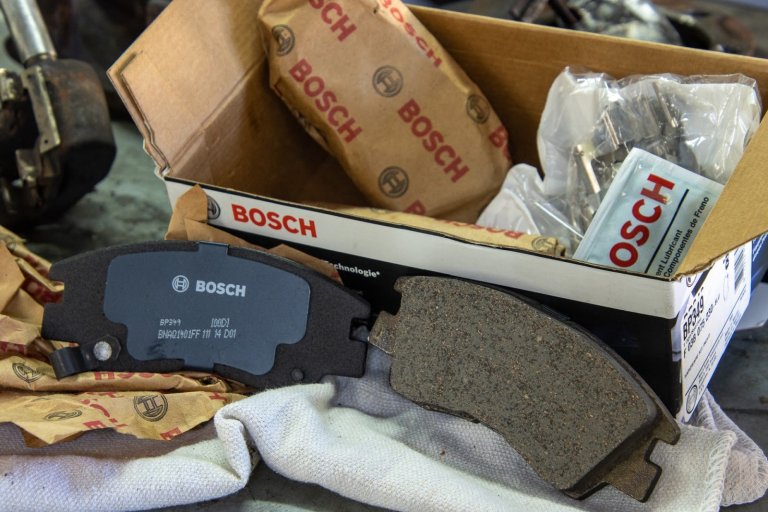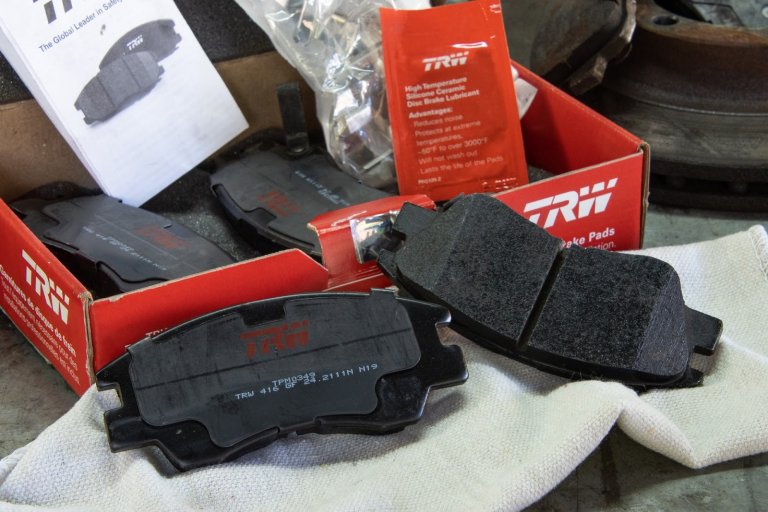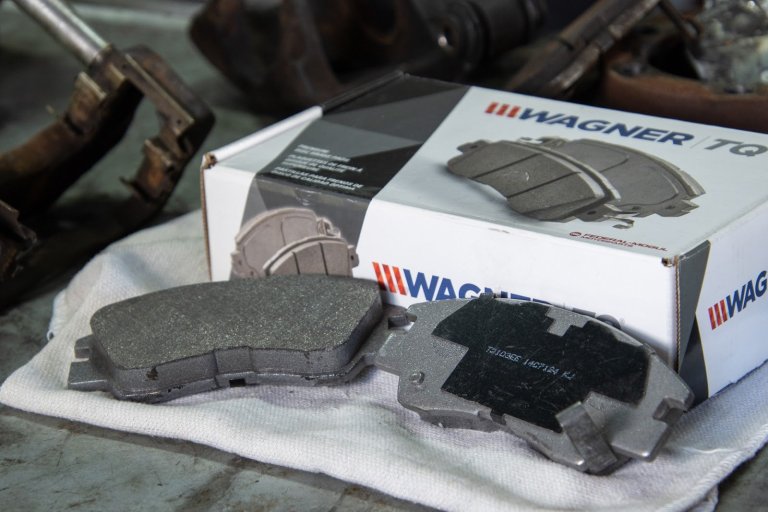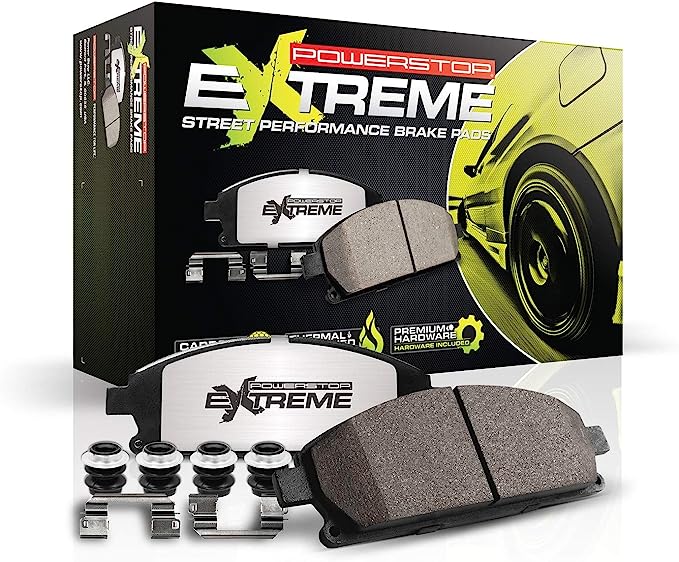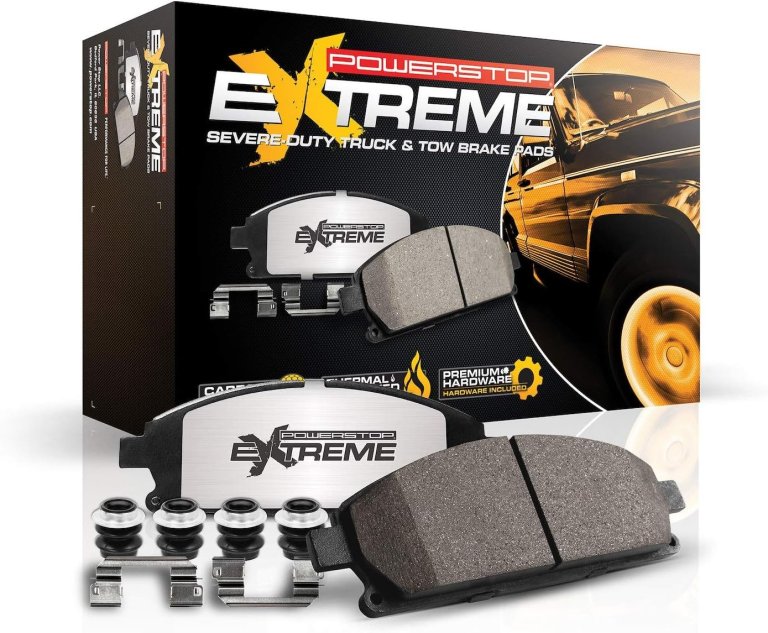We may earn revenue from the products available on this page and participate in affiliate programs. Learn more ›
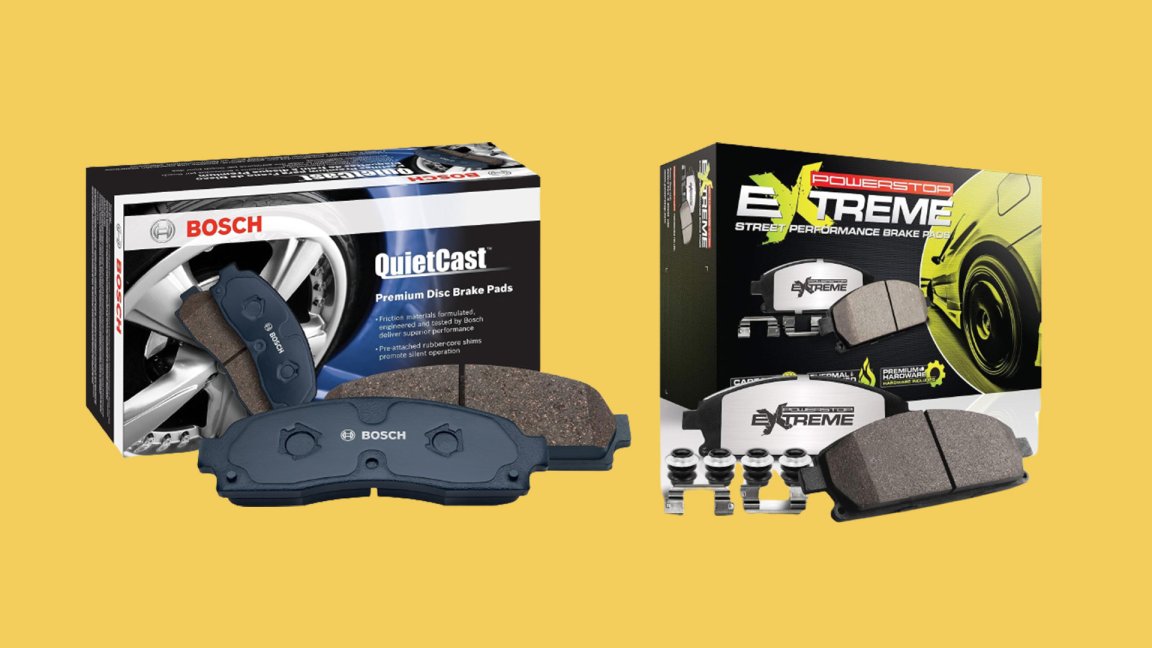
The right brake pads are an often overlooked, critical component of your driving experience and, more importantly, safety. So, even if the first thing you can grab at the parts store will work, it’s worth making an educated decision. The parts people might take care of you, but you can’t always take it on faith that they’re going to give you the pads that best suit your needs. There’s a good chance they’ll throw whatever happens to be sitting on the shelf, especially if the stores having a promotion.
Luckily, pads aren’t that complicated. Even if manufacturers use different blends for different purposes, some basic information is all you need to set yourself in the right direction. If that’s not enough, I’ll talk you through some of the best options on the market.
Summary List
- Best Overall: Bosch QuietCast
- Best Value: TRW Premium
- Honorable Mention: Wagner ThermoQuiet
- Best Performance: Power Stop Z26 Street Performance
- Best for Trucks: Power Stop Z36 Truck and Tow
Our Methodology
Brake pads are something our team has plenty of experience with. Maybe too much. While building world-class vehicles might not be something we get to do on a regular basis, we do get to do our fair share of brake work. Over the years, the team has built up a good amount of knowledge when it comes to brake pad selection. We didn’t go on just that, though. As always, plenty of homework was done to ensure you’re getting sound recommendations. This is also one of the instances where hands-on testing was a part of things, helping us to further fortify the soundness of our suggestions to you.
The Best Brake Pads: Reviews & Recommendations
Best Overall: Bosch QuietCast
Pros
- Available for a wide range of applications
- Premium quality
- Better performance than stock
- Great comfort characteristics
Cons
- Not all sets include hardware
- Higher cost than comparables
Bosch’s Quietcast line is one subjected to hands-on testing and the favorite of the batch for daily driving purposes. Bosch is an OE supplier, and part of what puts it on the top of this list is the level of quality it brings to the table. These semi-metallic brakes are a cut above much of the competition and deliver a respectable blend of brake performance and comfort. The packaging was even better than most, with each pad coming wrapped with paper. What also helps further solidify QuietKast’s place as our top pick is the comprehensive coverage of applications.
As for the downsides, not all QuietCast pads come with hardware. It’s also worth pointing out that you pay a little more for these pads than some comparable sets. The quality may be worth the expense, but budget restraints will ultimately take some folks elsewhere.
Best Value: TRW Premium
Pros
- Excellent performance for the price
- Competitive pricing
- Better performance than stock
- Good comfort characteristics
Cons
- Limited availability in some markets
- Not all sets include hardware
While not the exact part number used, this TRW set is representative of the brake pads subjected to hands-on testing. TRW pads aren’t the cheapest option out there, but they take the pick for Best Value because of what they bring to the table for the selling price. Performance is improved over stock, they offer great comfort characteristics, and the level of quality far exceeds much of the direct competition. With details such as the large nitrile rubber-coated steel shims and silicate-compound Citec or Coating Innovation Technology to aid with the break-in, combined with the performance characteristics, it’s no surprise TRW pads so popular.
The biggest problem you’ll run into with TRW pads is that they aren’t as widely available as some other options. Also, it shares the issue of spotty hardware with many other manufacturers.
Honorable Mention: Wagner ThermoQuiet
Pros
- Long pad life
- Great performance over stock
- Competitive pricing
- Good comfort characteristics
Cons
- Not all sets include hardware
- Quality control issues are somewhat common
Wagner ThermoQuiet brake pads are another excellent choice for daily drivers and another subject of hands-on testing. They’re a good step up in terms of performance but aren’t quite aggressive enough to be considered an all-out performance pad. Because they feature Wagner’s one-piece design, they offer great comfort characteristics. These pads also produce very little brake dust, making them tough to beat on the average road vehicle.
The biggest thing hurting these pads is the number of quality control-related complaints found in the reviews. It’s not enough to make it worth avoiding these pads at all costs, but there are more than usual. Also, it’s only fair to point out that not all sets come with hardware.
Best Performance: Power Stop Z26 Street Performance
Pros
- Excellent performance over stock
- Ceramic blend retains good comfort characteristics
- Suited for use with high-performance applications
Cons
- Expensive
- Limited application coverage
If you’re shopping for pads for a performance application with stock calipers, Power Stops Z26 pads are going to catch your attention. The performance of the carbon-ceramic compound is a big step up from factory pads. They also deliver great comfort characteristics, and low dust output keeps you from worrying about installing them on a hot daily driver. It’s also worth pointing out that you can often buy these pads in complete kits with rotors if your entire brake system is due for service.
These pads are considered a performance upgrade, so it’s no surprise that they bring in a little more money than a set of stock-replacement pads. Also, they are only available for a limited number of cars, keeping them out of the question for the average driver.
Best for Trucks: Power Stop Z36 Truck and Tow
Pros
- Excellent performance over stock
- Ceramic blend retains good comfort characteristics
- Improves safety during towing and off-road situations
Cons
- Expensive
- Limited application coverage
Power Stop is also the name to call on when you need pads suited for truck duties. Its Z36 brake pads are a great step up for towing, and truck applications with stock calipers, much like the Z26 are for performance applications. These offer much better performance over stock and prove to be particularly good at controlling the weight that comes with the truck territory, on or off the main roadways. And because these are ceramic pads, the performance gains don’t come at the cost of comfort. Also like Z26 pads, these are available in complete kits for those looking to service their truck’s brakes on all four corners.
It’s likely no surprise, these carbon-ceramic pads come at a higher-than-usual cost. It’s only fair to point out that, as a specialty pad, these are limited to specific applications.
Our Verdict on the Best Brake Pads
Again, Bosch QuietCast pads take our top pick. They offer a great blend of all the things you want in brake pads and deliver them to a wide range of vehicles. However, you really can’t go wrong with pads TRW Premium if they’re available for your application.
Things to Consider Before Buying Brake Pads
Buying brake pads is a relatively simple task. That doesn’t mean you won’t need to know at least a little bit about what you’re getting into to make the right choice, though. Take a look at some of the key considerations below to get a handle on the process before you dive in.
Friction Materials
Organic
Non-asbestos organic (NAO), or simply organic, pad compounds are easier on rotors and more affordable than others. However, that comes at the expense of pad life. These pads aren’t designed to handle heavy braking. They also produce a considerable amount of brake dust. They may be a great option for manufacturers looking to keep costs low, but you’re almost always better off moving to pads that use other friction materials.
Metallic
Moving to a semi-metallic or metallic brake pad is where pad performance starts to pick up. Semi-metallic pads with a 30-60% metal content are most common for street applications. These pads offer improved performance and pad life. More metal improves these aspects, which also makes the pads harder on rotors and increases brake dust. Pads with high metal content are a great choice for racing, motorcycles, and powersports applications, but are a little too aggressive for daily driving purposes.
Ceramic
Ceramic brake pads are growing in popularity. These compounds are favorable for their ability to combine performance, durability, and comfort aspects drivers value. The exact blend varies from manufacturer to manufacturer, but the name is derived from the use of kiln-fired ceramic in the pads. An interesting characteristic of these pads is that when they make noise, it’s generally in frequencies undetectable by the human ear. As you might expect, these are the most expensive of the bunch, but many view the extra cost as a fair trade for all the benefits.
Brake Pad Pricing
The application you’re working with, and the type of brake pad you select are the biggest determining factors in the price. Still, you should expect to pay anywhere from $25-$60 for most applications. As with most things, moving to high-end and high-performance applications can multiply the price of brake pads substantially.
FAQs
You’ve got questions. The Drive has answers.
A: Brake pads mount in a caliper with pistons that apply pressure, and the brake rotor is sandwiched between the pads. As the brake pedal is pressed, hydraulic pressure builds up in the system, driving the pistons, which causes the pads to clamp down on the rotor.
A: A dead giveaway is sound. Worn-out pads tend to squeal under braking and may produce a grinding noise while coasting or accelerating. Loss of braking power and excess dust are also signs that pads are due for replacement.
A: In a perfect world, brake pads will last anywhere from 30,000-70,000 miles. However, your driving habits, the application, and your environment will all impact pad life.
A: Absolutely. Changing brake pads is one of the easiest jobs you can perform on a vehicle and is where many DIYers get their start. But before diving in, you will need to study the service procedure for your vehicle to decide what tools you need and whether it’s a job you want to take on.
A: Breaking in brake pads is essentially the process of mating the wear surfaces of the rotor and the pad together. The process of doing so varies by pad. However, the process should go something like gradually braking from 30-35 mph without stopping, then again from 50-55 mph. After that, it’s important to avoid hard braking for a few hundred miles.
